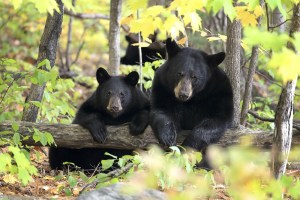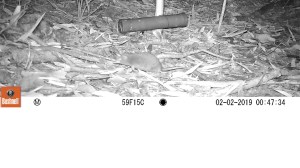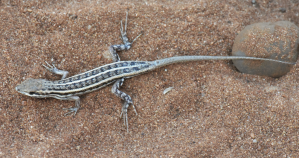Discover stories in Wildlife
Why Are Black Bears Thriving?
Most of the world’s bear species face serious threats, but black bears have adapted to a human-dominated landscape.
Caught on Camera: the Long-Nosed Chilean Shrew Opossum
Camera traps in the Valdivian Coastal Reserve document an increase in sites where one of Chile's least-known marsupials is known to live.
Meet the Mysterious Long-Nosed Chilean Shrew Opossum
Spoiler alert: it's not a shrew. It's a relict marsupial, and has lived in the forests of Chile's Valdivian Coast for millennia.
Blue Mussels & Water Pollution: Protecting Wales’s River Conwy
TNC & National Geographic Society extern Evy Mansat Gros shares her experience studying blue mussels & water pollution in Wales.
Bringing Beavers Back to Britain
Nature Conservancy & National Geographic Society extern Eleanor Salisbury shares her experience studying how reintroducing beavers to the U.K. can benefit both nature and people.
Crested Rats & Hairy Porcupines: Meet 7 of the World’s Coolest Rodents
Rodents don’t always have the best reputation, but they can be beautiful, surprising and just downright bizarre. Here are seven of the world’s coolest rodents.
TNC Scientist Honored with Naming of New Skink Species
It’s not every day that a young female scientist is honored alongside David Attenborough and E. O. Wilson.
Backyard Bioblitz: How to Be A Citizen Scientist in Your Backyard
A bioblitz is a nature scavenger hunt, for science. Here are our tips to DIY a bioblitz from your very own backyard.
Small but Mighty: Pacific Island Atolls are Globally Important Sites for Tropical Seabirds
Global conservation efforts largely overlook the important contributions of atolls to the protection, restoration, and survival of tropical seabirds.
This Skunk Does Handstands. Yes, Handstands.
The island spotted skunk is difficult to observe. But a monitoring program on California’s Channel Islands offers a glimpse at this creature’s amazing habits.
Can Listening to Oyster Reefs Help Us Assess Their Health?
University of Texas PhD candidate Philip Souza is using acoustic monitoring to eavesdrop on oyster reefs.
Saltmarsh Sparrow: The “Canary” of Sea-Level Rise
The saltmarsh sparrow is literally adapted to keep its head above water. But the seas are rising.











